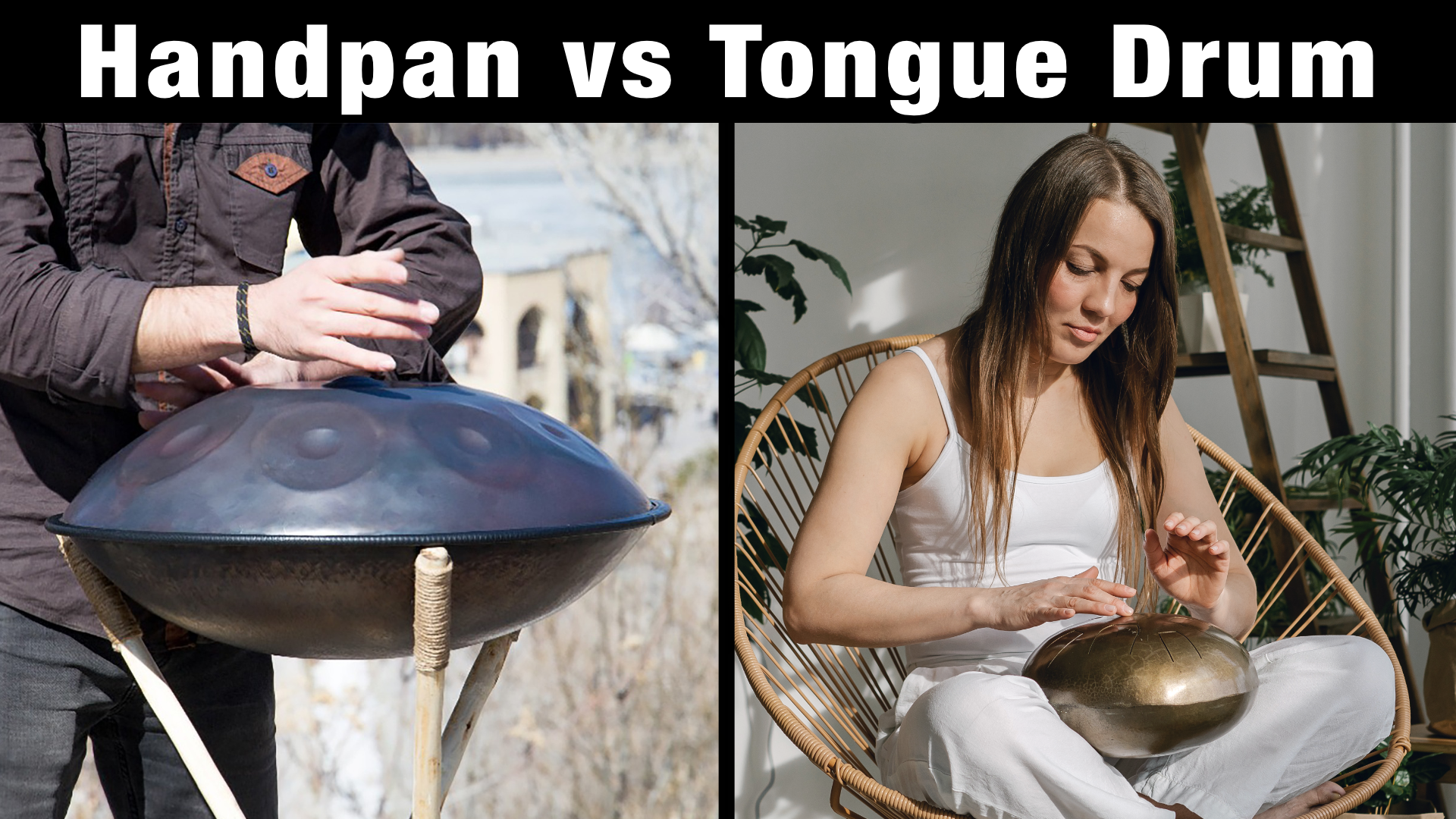 Both the handpan and the steel tongue drum share that magical bell like tone and sustain, but are still different in many ways.
Both the handpan and the steel tongue drum share that magical bell like tone and sustain, but are still different in many ways.
So which one should you choose, a handpan or a tongue drum? Let’s compare the main differences:
Handpan vs Tongue Drum – Differences
- The handpan is made to be played with your hands (hence the name)
- The tongue drum is smaller and therefore mostly played with mallets
- The handpan is much bigger and also more expensive
- The tongue drum is available with more notes
- The handpan has a deeper, warmer tone
- The tongue drum have a longer gong like sustain
- The handpan is more percussive with bright attack
- The tongue drum can often be re-tuned with magnets
Why you should choose a Hangpan
The handpan is best if you want to play fast phrases, percussive rhythms, and you love that meditative and magical tone of this instrument. Since it is much bigger it is very easy to play with your hands and hit the right notes without accidentally hitting the note next to it.
Why you should choose a Steel Tongue Drum
It is smaller, cheaper, and works better for melodies. It also holds the tuning better than a handpan which requires maintenance eventually to keep proper tuning.
Many tongue drums can also be tuned, and even have specific notes re-tuned, by using magnets that you place on the tongues on the inside by accessing them from the hole below the instrument.
Double Tongued Steel Drums
If you want a sound that is more similar to hangpans, I would recommend looking into tongue drums that have double tongues for each note. Meaning a smaller tongue that is tuned to the perfect octave.
This will have a more “magical” tone due to the extra harmonic overtones it creates. It is still not as percussive, deep and rich as a handpan, but it is much more close to it than a tongue drum with single tongues per note.

